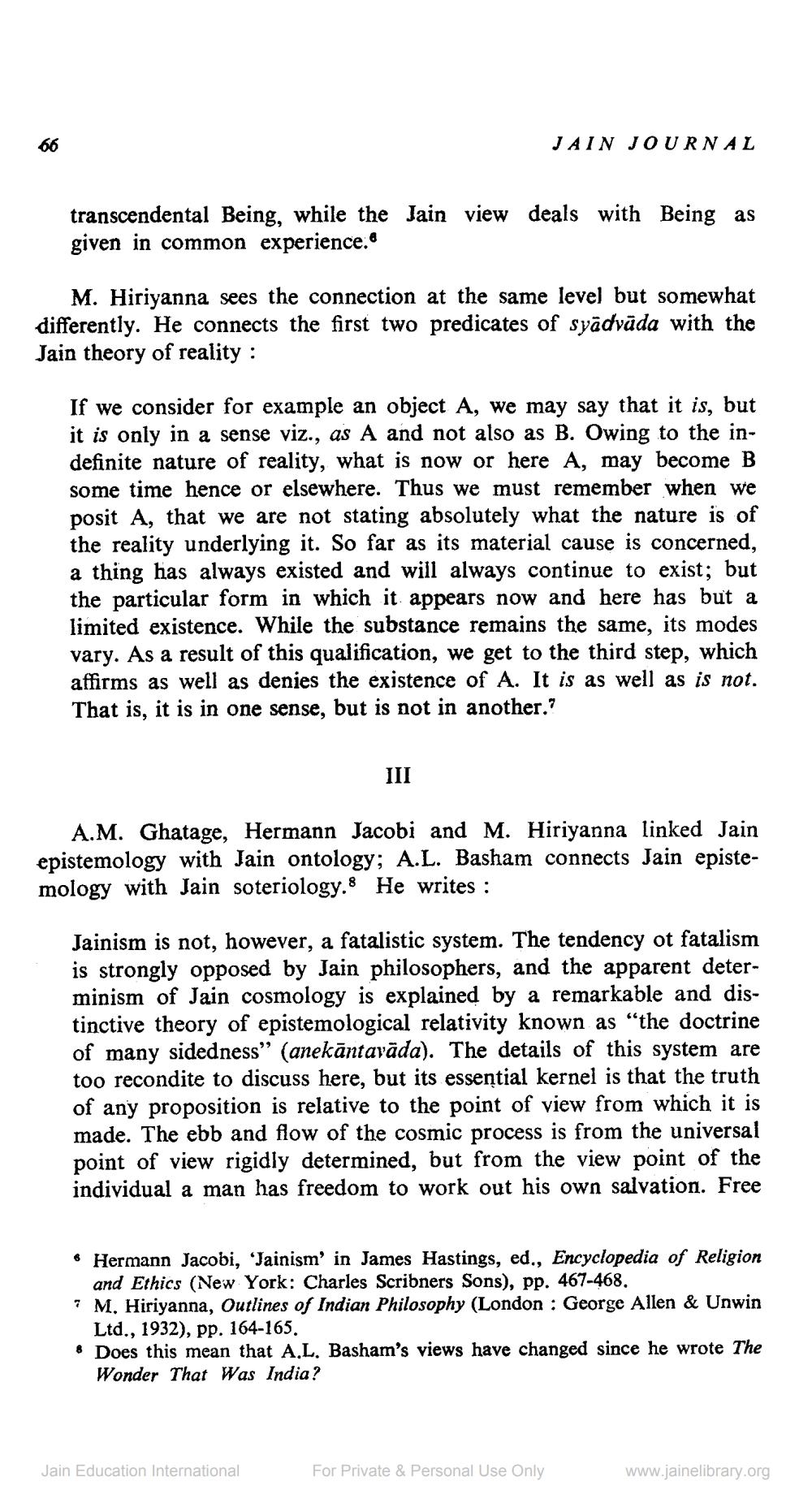________________
JAIN JOURNAL
deals with Being as
transcendental Being, while the Jain view given in common experience.
M. Hiriyanna sees the connection at the same level but somewhat differently. He connects the first two predicates of syādvāda with the Jain theory of reality :
If we consider for example an object A, we may say that it is, but it is only in a sense viz., as A and not also as B. Owing to the indefinite nature of reality, what is now or here A, may become B some time hence or elsewhere. Thus we must remember when we posit A, that we are not stating absolutely what the nature is of the reality underlying it. So far as its material cause is concerned, a thing has always existed and will always continue to exist; but the particular form in which it appears now and here has but a limited existence. While the substance remains the same, its modes vary. As a result of this qualification, we get to the third step, which affirms as well as denies the existence of A. It is as well as is not. That is, it is in one sense, but is not in another.?
III
A.M. Ghatage, Hermann Jacobi and M. Hiriyanna linked Jain epistemology with Jain ontology; A.L. Basham connects Jain epistemology with Jain soteriology.8 He writes :
Jainism is not, however, a fatalistic system. The tendency ot fatalism is strongly opposed by Jain philosophers, and the apparent determinism of Jain cosmology is explained by a remarkable and distinctive theory of epistemological relativity known as “the doctrine of many sidedness” (anekāntavāda). The details of this system are too recondite to discuss here, but its essential kernel is that the truth of any proposition is relative to the point of view from which it is made. The ebb and flow of the cosmic process is from the universal point of view rigidly determined, but from the view point of the individual a man has freedom to work out his own salvation. Free
6 Hermann Jacobi, 'Jainism in James Hastings, ed., Encyclopedia of Religion
and Ethics (New York: Charles Scribners Sons), pp. 467-468. 7 M. Hiriyanna, Outlines of Indian Philosophy (London: George Allen & Unwin
Ltd., 1932), pp. 164-165. Does this mean that A.L. Basham's views have changed since he wrote The Wonder That Was India?
Jain Education International
For Private & Personal Use Only
www.jainelibrary.org




